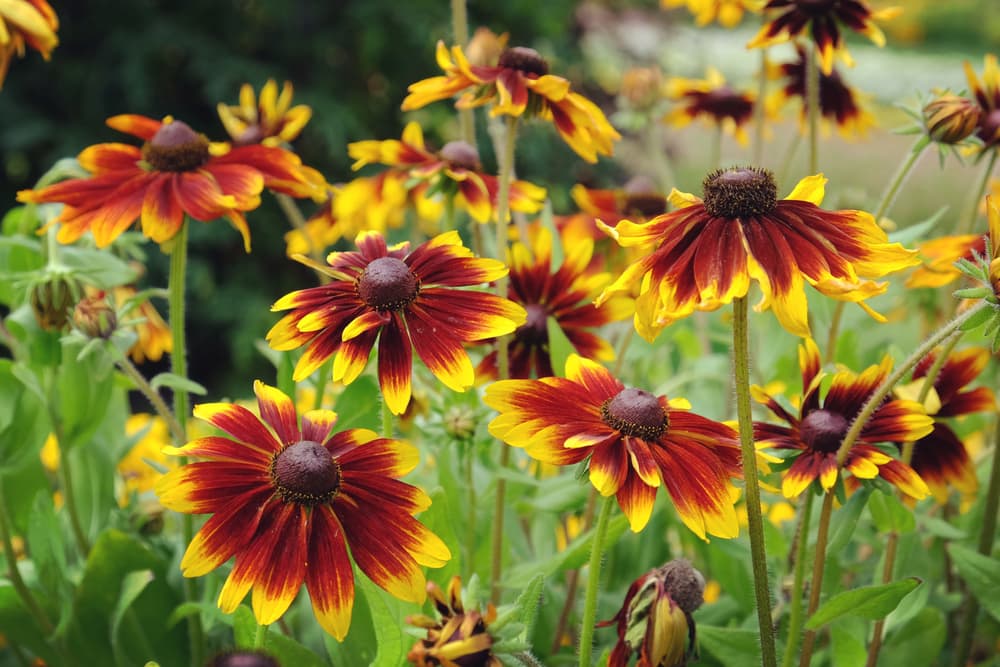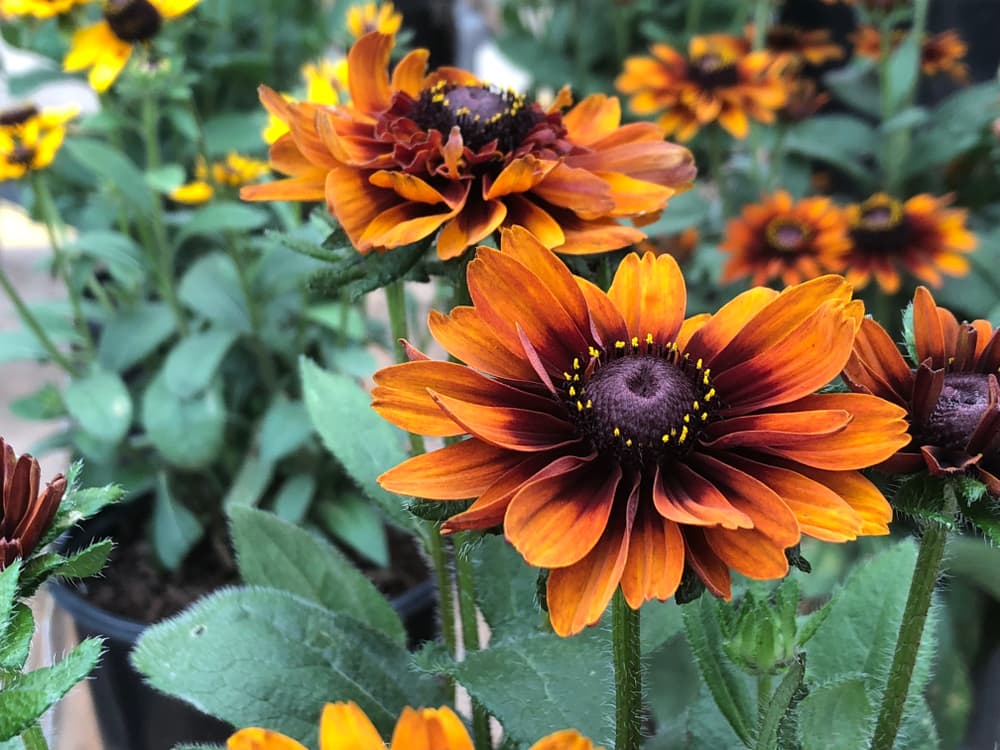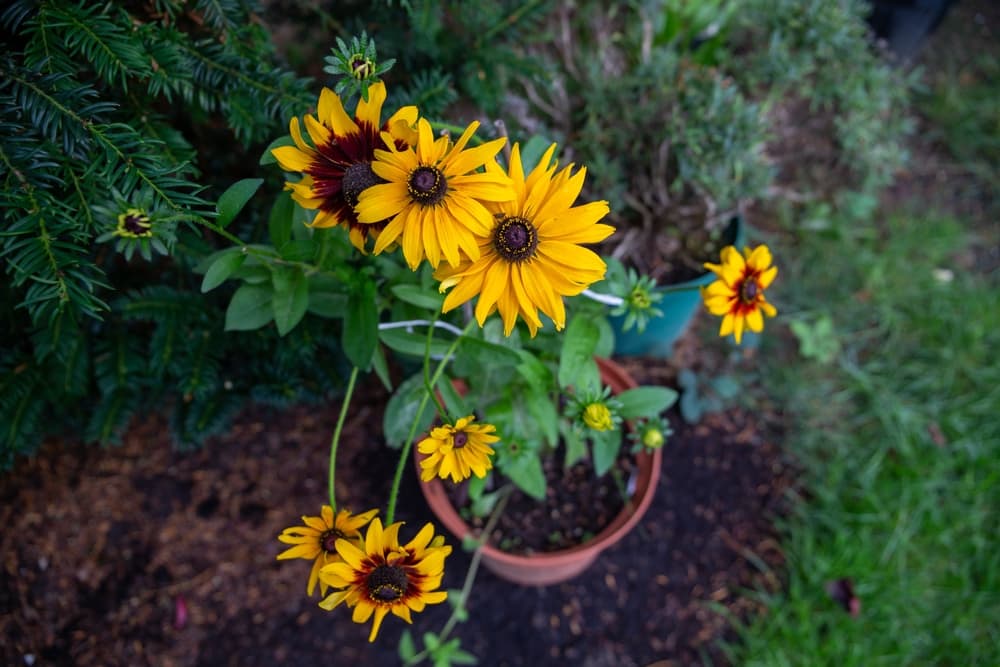PERENNIALS > RUDBECKIA
Chris is a gardening writer and nature enthusiast. He graduated from Oxford Brookes University in 2022 with an MA in Psychology. Chris works with the Leeds Green Action Society, helping their food cooperative by growing various fruit and vegetables on their two allotments in Hyde Park, Leeds.
Reviewed By COLIN SKELLY

Colin is a Horticulturist and Horticultural Consultant with experience in a range of practical and managerial roles across heritage, commercial and public horticulture. He holds the Royal Horticultural Society’s Master of Horticulture award and has a particular interest in horticultural ecology and naturalistic planting for habitat and climate resilience.
Contributions From LEE BURKHILL

Lee Burkhill, better known as 'The Garden Ninja', is an RHS award-winning Garden Designer and TV Presenter who has worked on the BBC’s Garden Rescue for 4 years. Lee also posts regular design and garden tips to his YouTube channel and runs a blog where he connects with those in the community to answer any questions they might have. He trained at The Royal Botanic Garden Edinburgh.

Matt Collins is the author of several books on gardening and travel and has written for many publications including The Guardian and The Times. He is also the Head Gardener at The Garden Museum in London. Matt trained at the National Botanic Gardens of Wales.

Molly Hollman has received numerous accolades for her garden & plant photography, including winning the Portfolio category of the Garden Photographer of the Year in 2022 and becoming a finalist in the International Close-Up Photographer of the Year in the same year. Molly is also the author of Creative Flower and Plant Photography and writes for the magazine Amateur Photographer on a regular basis.
IN THIS GUIDE
RUDBECKIA GUIDES
Common Problems
Dividing
Growing From Seed
Planting
Pruning
Varieties
Rudbeckia, commonly known as ‘Black Eyed Susan’ is a plant you have probably seen before, although you may not have known it by name.
Its familiarity is down to the fact that this lovely sunshine yellow bright flower is commonly found growing wild in fields and meadows throughout the UK and USA.
It is a native species of North America and, you possibly won’t be surprised to hear, a fully-paid up member of the sunflower family.1Rudbeckia. (n.d.). Kew Royal Botanic Gardens. Retrieved March 23, 2023, from https://powo.science.kew.org/taxon/urn:lsid:ipni.org:names:329766-2
“Rudbeckia tops the list of my favourite plants for its abundant, long-lasting and hugely reliable flowers, which open like small sunflowers in a domed mass,” says Matt Collins, a Garden Writer.
“Provided it gets a good dose of sunshine, it’s just the most rewarding and unfussy of plants, with long-stemmed blooms that also make fantastic cut flowers.”

This pretty daisy-like bloom with its yellow petals and dark inner circle (hence the name) is actually a pretty powerful plant.
So powerful, in fact, that it will tend to eventually outgrow most other plants in its wake.
Butterflies and bees use it for nectar – other garden animals including birds also feed on the seed heads.
This is another reason why the plant is so prevalent – the birds and insects spread them as they fly back to their nest (with the seeds as food).
“It’s a plant that a lot of people don’t love, but the Rudbeckia genus is one of my favourite species of plant,” shares Lee Burkhill, the Garden Ninja.
“It flowers in late summer with typical daisy flowers that are bright and light up a garden. People love it or hate it because its colours are so intense.
“It will pretty much tolerate every soil, so for new gardeners, it is great.”
Overview
| Botanical Name | Rudbeckia |
| Common Name(s) | Black Eyed Susan, Coneflower |
| Plant Type | Perennial Flower / Annual Flower |
| Native Area | North America |
| Hardiness Rating | Mostly H4-H6 |
| Foliage | Herbaceous, simple or pinnately divided leaves |
| Flowers | Daisy-like flowers, yellow for perennial types, other colours for annuals and biennials |
| Flowering Months | June, July, August, September |
Sunlight
Preferred
Full Sun / Partial Shade
Exposure
Exposed or Sheltered
Size
Height
0.5 – 1M
Spread
0.1 – 0.5M
Bloom Time
June – September
Soil
Preferred
Chalk, Loam, Clay
Moisture
Moist but well drained
pH
Any
Rudbeckia isn’t just grown wild, of course; you will also find it in gardens up and down the country where it is often used for creating colourful and attractive borders.

In addition, its cheerfully bright blooms are also a favourite of many high-street florists.
“I love to photograph Rudbeckias, which often have contrasting velvety textures that make you want to touch them,” shares award-winning Garden Photographer Molly Hollman.
With both summer annual and perennial varieties, Rudbeckia comes in a number of different types and beautiful jewel-like colours.
You will certainly find blooms appearing in shades associated with an Indian Summer, such as gold, orange, rust and yellow.

New hybrid versions are equally as colourful and arresting with their shades of emerald green and bright pink.
In essence, Rudbeckia is a very pretty flower which is colourful, easy to grow and low-maintenance.
The plant self-propagates so even if you leave it be, chances are it would still bloom prolifically in your garden.

As a result, it is loved by the majority of gardeners, both amateurs and experienced types on both sides of the Atlantic.
“Perennial Rudebckias are a mainstay of herbaceous borders and are particularly popular in prairie style and matrix planting with grasses,” shares Colin Skelly, a Horticultural Consultant.
“They are well suited to naturalistic planting, and the range of sizes and colours makes them popular for other styles of planting too.
“Rudbeckia is prone to slugs and snails when a young plant, but is more robust when established.”
Plant Care
Although Rudbeckia is capable of withstanding drought conditions, the flowers will grow better if they are watered when necessary.
In other words, it is really not a good idea to let them dry out – not, that is, if you want to see them flourishing and brightening up your borders.

Dividing older plants doesn’t just ensure you have healthier blooms, but that there isn’t too much spreading through self-seeding.
Habitat & Growing Conditions
Rudbeckia should always be planted in the sunniest spot in your garden.
Or, if that’s not available then in a spot that has some shade, but also access to the sun at times.

The soil is important too; preferably moist but not susceptible to becoming waterlogged following periods of intense rain.
Heavier soil can be used, provided you surround the plant’s roots with plenty of good compost.
Container Growing
Make sure your container pot is at least 45cm wide and 30cm deep.
It should also have plenty of decent-sized drainage holes at the bottom.
This will ensure that the soil will remain moist but not waterlogged (as this would kill-off the plant).

Any type of decent multipurpose compost is fine.
Feed after two weeks then every three to four weeks after this.
Incidentally, one of the best varieties of Rudbeckia to grow in containers is ‘Toto’, the dwarf version, since it doesn’t need as much room as the others.
How To Grow Rudbeckia
Start growing the seeds in a greenhouse or at least indoors, during the months of February, March and April.

Expect to wait up to three weeks for them to germinate.
Then, as they grow either thin them out to around 30cm space in between or put them into pots.
Finally, move them into their final positions when the root balls are strong and large enough to transfer.

If you’ve tried both methods of growing (directly planting into the soil and transplanting), then you have probably noticed that directly sown seeds will often not flower until their second year, while transplanted rootballs will bloom within the first 12 months.
FAQs
What Height Does Rudbeckia Grow To?
The plants can grow to more than 1m tall, with leaves six inches long.
However, not all varieties of the species grow to this height.
Some can grow to as much as 2m tall while the dwarf versions grow to just 30cm tall.
When Do They Flower?
You’ll find these lovely plants in UK gardens from mid-summer to the first dusts of frost in winter.
Does Rudbeckia Grow Back Every Year?
Yes, they may be perennials but certain varieties are often treated as annuals.
Do They Need Full Sun?

They prefer full sun, but the plants will also flourish in partial shade, provided there’s still a fair amount of golden rays they can soak up from time to time.
What Kind Of Scent Does Rudbeckia Flowers Have?
These flowers do not actually have any scent at all, but their durability and beauty appear to make up for that for plenty of gardeners on both sides of the pond.
Are Rudbeckia Perennials?
Yes – popular perennial versions of the plant include R. goldsturm, R. hirta ‘Irish Eyes’ and R. subtomentosa ‘Henry Eilers’.
References
- 1Rudbeckia. (n.d.). Kew Royal Botanic Gardens. Retrieved March 23, 2023, from https://powo.science.kew.org/taxon/urn:lsid:ipni.org:names:329766-2

